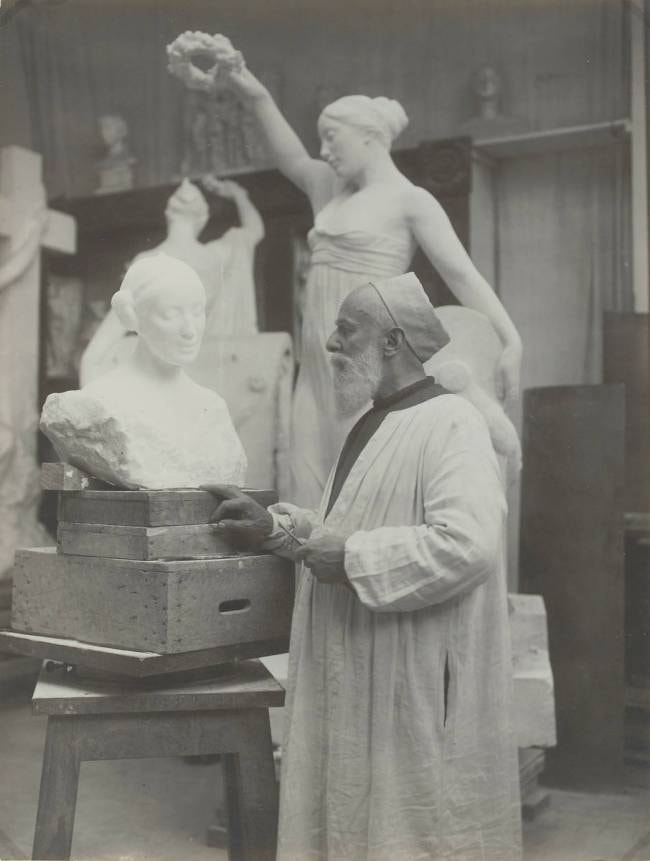
Paul-Albert BARTHOLOME
Born into a wealthy family, Bartholomé had a choice of career paths. During a stay in Switzerland, he was taught by the painter Barthélémy Menn, a pupil of Ingres. On his return to France, he enrolled in Gérôme's studio, but was quickly put off by its academicism. He then embarked on a career as an independent painter, making his debut at the 1879 Salon with A l'ombre, a naturalist work in the style of Millet, for whom he had great admiration. Under the influence of the Impressionists and Puvis de Chavannes, his palette brightened and he turned to more contemporary subjects. He became a friend of Degas.
The death of his young wife, Prospérie de Fleury, in 1877, broke his heart and caused a real rupture in his life. He stopped exhibiting at the Salon until 1890, when he reappeared as a sculptor. For his wife's grave in the Bouillant cemetery in Crépy-en-Valois, he created a very realistic Christ on a stele, in which a man gives a kiss to his dead wife. In despair, he devoted 12 years of his life to a Monument aux morts, a model of which he exhibited at the Salon des Beaux-Arts in 1895. Commissioned by the French government, this monumental work was built and placed in the Père Lachaise cemetery, where it is the major sculpture. On November 1, 1900, the inauguration of this monument, which earned him universal renown, was a major event attended by over one hundred thousand Parisians.

